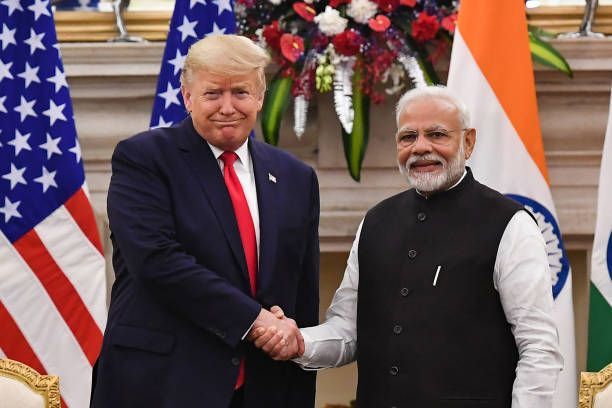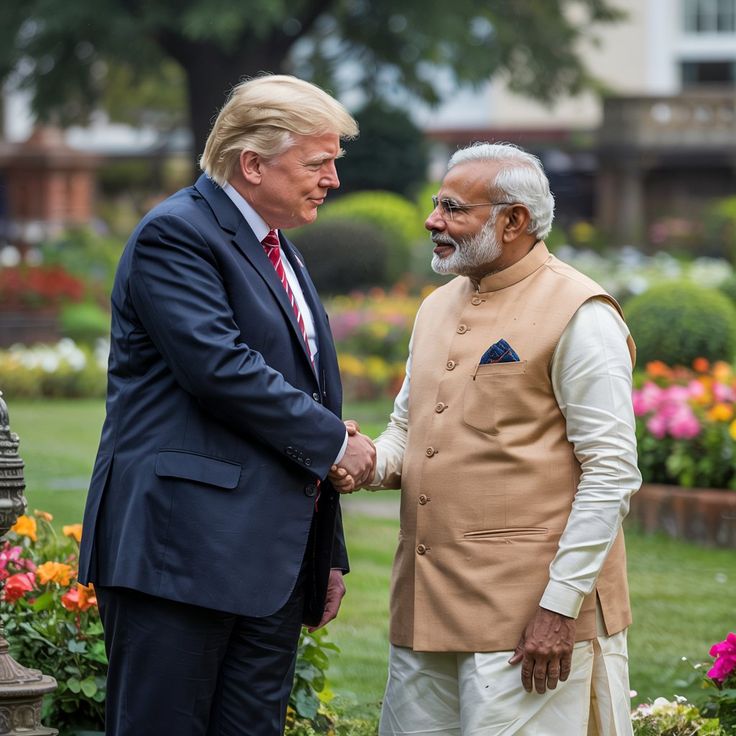The United States is preparing to impose a 50% tariff on a number of imports beginning tomorrow, a move led by former President Donald Trump as part of his tough trade policy framework, and the world economy is preparing for a seismic shift. The decision, aimed at protecting American industries from what he calls “unfair trade practices,” has sent shockwaves through international markets. Exporters across Asia, Europe, and other regions are now recalibrating strategies, while governments scramble to put in place mitigating measures to cushion their economies.
This development marks one of the most significant tariff increases in recent memory, reigniting debates about trade wars, supply chain vulnerabilities, inflationary pressures, and the future of globalization. As the deadline looms, exporters and policymakers alike are caught in a race against time to adapt to a drastically altered trading environment.
Background: Trump’s Trade Policy Playbook
Donald Trump’s approach to trade has always been rooted in protectionism, with slogans like “America First” shaping his economic philosophy. During his presidency, he launched a series of tariff escalations—most notably with China—arguing that global trade imbalances hurt American workers and industries.
The new 50% tariff, however, goes further than most previous measures. Unlike sector-specific tariffs imposed earlier, this broad-based levy is expected to affect a wide range of goods, from industrial machinery and electronics to textiles and agricultural imports.
While Trump has justified the move as a way to revitalize domestic manufacturing and reduce reliance on foreign supply chains, critics argue that the decision risks triggering a trade war escalation that could ripple across global markets.
Immediate Concerns for Exporters
Export-driven economies are particularly vulnerable to the tariff rollout. Countries like China, Mexico, Vietnam, India, and several EU nations are major suppliers of goods that now fall under the tariff list.
China – Already battling existing tariffs, Chinese exporters fear losing more ground in the U.S. market. Sectors such as electronics, machinery, and steel are set to be hardest hit.
India – With its expanding pharmaceutical and textile exports, India faces potential roadblocks, even as the government explores alternate markets in Africa, the Middle East, and Europe.
European Union – German automobile and machinery manufacturers are particularly exposed, while agricultural exporters in Spain, France, and Italy worry about reduced competitiveness.
Mexico & Canada – As close trade partners under the USMCA framework, they face uncertainty about exemptions and retaliatory measures.
For small and medium exporters, the tariffs could mean shrinking profit margins, disrupted contracts, and even market exits if alternative buyers are not secured quickly.
Possible Economic Effects
Economists warn that the tariffs may create a domino effect across multiple sectors:
Supply Chains: American businesses that depend on foreign suppliers for intermediate goods may have to pay more for inputs, which would increase manufacturing costs.
Consumer Prices: Higher tariffs could translate into increased prices for American consumers, adding to inflationary pressures.
Global Trade Balance: Countries with high trade surpluses against the U.S. may see significant reductions in export volumes.
Currency Adjustments: Some nations might allow their currencies to weaken to offset tariff costs, potentially fueling currency volatility.
Retaliatory Tariffs: In response, trade partners may impose counter-tariffs on U.S. agricultural goods, technology, or energy exports.
The World Trade Organization (WTO) has already flagged the policy as potentially destabilizing, warning that such unilateral measures risk undermining the multilateral trading system.
Government Measures to Mitigate Impact
Recognizing the looming disruption, several governments have begun rolling out countermeasures and support programs:
India: Officials are preparing export subsidies, trade diversification plans, and new trade agreements with the Middle East and ASEAN nations to reduce dependence on the U.S. market.
China: Beijing is expected to intensify trade ties with Russia, Southeast Asia, and African nations, while providing tax relief and incentives for affected exporters.
European Union: Brussels is considering a joint response mechanism, including potential retaliation at the WTO and aid packages for vulnerable industries.
Mexico & Canada: Both governments are lobbying Washington for sector-specific exemptions under the USMCA, while strengthening trade links with Latin America.
In the U.S., the Biden administration (and policymakers in Congress) face pressure to balance domestic industrial gains with the economic risks of inflation and trade retaliation. Analysts suggest that targeted relief for U.S. farmers and small businesses may also be on the agenda, given that retaliatory tariffs could hurt rural exporters.
Voices from the Export Industry
Leaders in the industry have voiced a mixture of cautious confidence and worry.
Electronics Sector: Manufacturers in Asia worry that sudden cost increases could price them out of the U.S. market, though some see opportunities in shifting focus to Europe and Africa.
Textiles and Apparel: Indian and Bangladeshi exporters anticipate contract renegotiations with U.S. buyers, with fears of delayed payments and canceled orders.
Automotive Industry: As the adoption of electric vehicles picks up steam, European automakers fear that price increases in the US market could reduce demand.
Agriculture: South American soybean and wine exporters worry about losing competitive edge, while American farmers fear retaliatory barriers abroad.
Some trade associations are calling for diplomatic engagement to prevent the situation from escalating into a full-scale trade war.
Market Reactions Ahead of Rollout
Financial markets have already reacted in anticipation:
Global Stocks: Asian and European indices slipped slightly, reflecting concerns about reduced export earnings.
Commodities: Prices of raw materials like steel and aluminum remain volatile as traders weigh reduced demand versus supply constraints.
Currencies: Due to demand for safe haven assets, the U.S. dollar slightly rose while the Mexican peso and Chinese yuan suffered mild depreciation.
Analysts suggest tomorrow’s rollout could trigger sharper fluctuations, depending on whether affected countries announce immediate countermeasures.
Expert Analysis: Short vs Long-Term
Short-Term: Economists predict disruptions in contracts, shipment delays, and supply chain realignments. Exporters may resort to absorbing losses in the short run to maintain relationships with U.S. buyers.
Long-Term: The tariffs could accelerate a global trend toward de-risking supply chains, with companies diversifying away from the U.S. or China to other markets. Some analysts argue this could eventually boost regional trade agreements, such as RCEP in Asia or intra-EU trade.
However, the risk of trade fragmentation remains high. Instead of a globally integrated market, the world could move toward parallel trade blocs, complicating logistics and increasing costs for businesses and consumers alike.
The Geopolitical Angle
Beyond economics, the tariff rollout carries geopolitical implications.
For China, it reinforces the narrative of strategic rivalry with the U.S., potentially deepening Beijing’s alignment with Russia and other non-Western economies.
For allies like Japan and South Korea, the tariffs complicate trade strategies, forcing them to balance ties with Washington against the need to protect exporters.
The policy strengthens calls for South-South cooperation by highlighting the vulnerability of relying solely on one export market for developing countries.
Given the political climate’s predominance of discussions about inflation, trade deficits, and jobs, the tariffs may also play a significant role in the next U.S. elections.
As the clock ticks down to Trump’s 50% tariff rollout tomorrow, the world is watching closely. For exporters, the challenge lies in navigating immediate shocks while planning for long-term adaptation. For governments, the priority is to safeguard industries, diversify trade, and prevent escalation into a wider trade war.
Whether this move strengthens American industries or destabilizes global trade will depend not only on U.S. resolve but also on how the international community responds in the days ahead.
The next 24 hours could set the tone for the future of global trade relations—either ushering in a new era of protectionism or sparking renewed efforts toward dialogue and cooperation.



